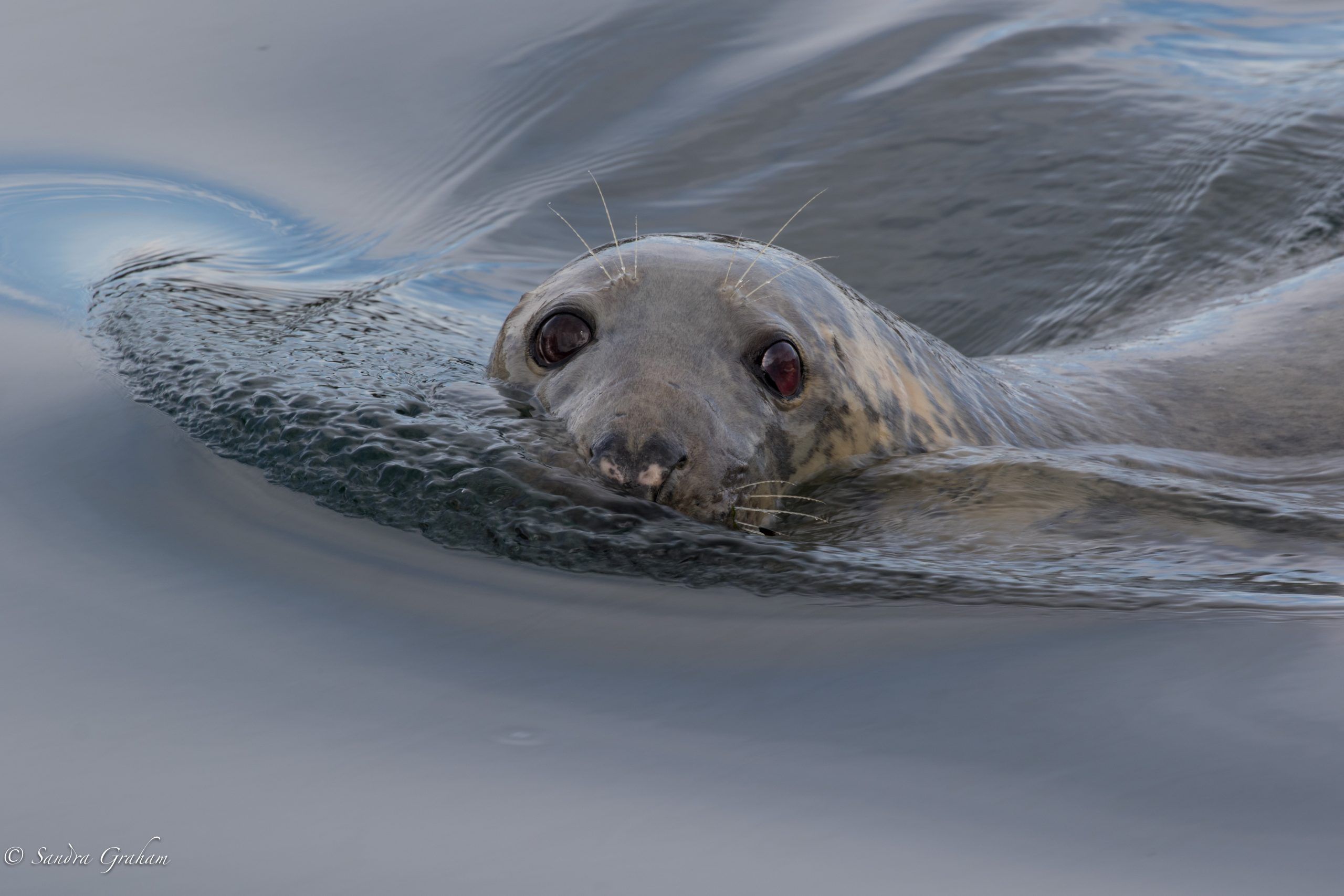The UK and Ireland are home to approximately 40% of the world’s grey seals and 95% of the European population. They can be found right around the UK coastline but are most abundant in Scotland (the Hebrides, Shetland and Orkney), with smaller numbers off Wales, Cornwall, East Anglia and North West England.
The grey seal is the larger of the two seal species found around Scotland. They can be distinguished from the harbour (or common) seal by their larger size and longer muzzle, with a distinctive ‘Roman nose’ profile, large eyes and long whiskers. Their fur is mainly grey but with unique spots and patches of darker brown and black.
Males can live up to around 25 years, while females up to 35 years. Seal pups have creamy white fur when they are born between September and December, and quickly gain weight on land before heading out to sea to hunt for themselves.
These seals travel large distances to feed on a variety of species including sandeels, herring, octopus and squid. They can be found bobbing on the surface of the water, or ‘hauled out’ on beaches or rocks, which are important resting areas. They tend to favour exposed coasts and islands.
Historically, grey seal populations population dropped to as low as 500 due to hunting and persecution; however, there are now more than 120,000 grey seals in the UK. Globally, grey seals are considered rare.
Action Needed
- Promote and support guidance on best practice for responsible marine wildlife watching to reduce disturbance of seals by recreational water users and marine wildlife tour operators.
- Press for the implementation of management to reduce bycatch in fishing gear, reducing risk to sensitive species through fisheries management measures and tailored fisheries restrictions across all our existing MPAs, in addition to mandatory rollout of Remote Electronic Monitoring (REM) across all vessel types to identify high risk areas, gear types and fisheries to focus monitoring and mitigation.
- Ban the sale of flying rings to reduce harmful and lethal entanglement of seals.
- Support non-disturbing and non-lethal methods of seal management on all fish farms.
- Ensure the Scottish Biodiversity Strategy is fully implemented, including its ambition to halt biodiversity loss by 2030 and restore biodiversity by 2045.
- Support investment in nature through implementation of Biodiversity Investment Plan.
Threats
Grey seals are threatened by entanglement in active and discarded fishing gear as well as everyday marine litter. Disturbance from the public and marine tour vessels at seal ‘haul out’ sites is a concerning issue and can cause individual and population level effects. Grey seals are sensitive to loud underwater noise pollution, from marine developments and industries, for example from pile driving for offshore wind farm construction and the use of licenced Acoustic Deterrent Devices around aquaculture sites. Habitat loss, prey depletion and climate change are all having a significant impact on this species.
MSP Nature Champion

Marie McNair
Member for: Clydebank and Milngavie
Region: West of Scotland
Party: Scottish National Party


